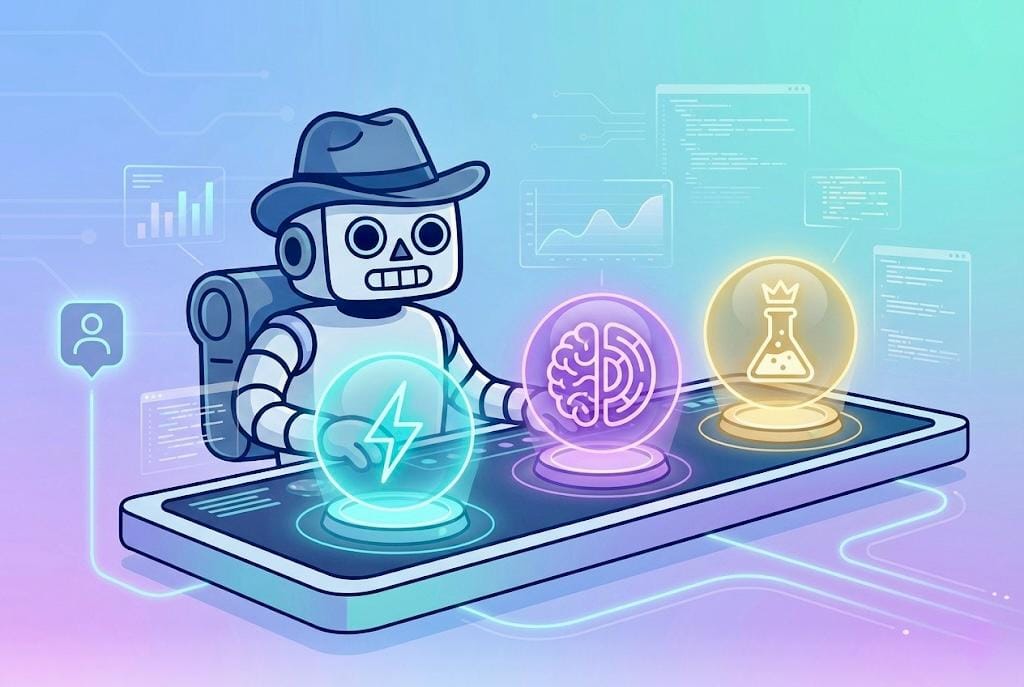Best Books on How to Build AI Agents Around API Wrappers

The development of Artificial Intelligence (AI) agents, particularly those that leverage Application Programming Interfaces (APIs) to interact with their environment and other systems—often termed "wrapper applications"—has become a focal point of AI conversation.
This article provides a comprehensive overview of the key literature in this domain, encompassing foundational theoretical texts, early practical guides on agent-service integration, and a significant body of contemporary work focusing on modern API technologies, Large Language Models (LLMs), and specialized agent development frameworks.
A notable trend is the sheer volume of recent and forthcoming publications, especially those scheduled for release in 2025. This surge shows a critical mass in AI agent development, largely propelled by advancements in LLMs and the enhanced accessibility of their powerful capabilities through APIs.
This article aims to guide developers, researchers, and technical leaders through this dynamic literary landscape, highlighting resources that are both foundational and reflective of the latest advancements in API-driven AI agent creation.
Looking to embed smart, API-driven agents into your apps? PromptLayer lets you design, deploy, and monitor AI agents in minutes. No backend headaches required.
- Drag-and-drop workflow builder for chaining multiple LLM calls, business rules, and API integrations visually
- Versioned Prompt Registry to track, compare, and roll back prompt iterations effortlessly
- Real-time observability & alerts on token usage, latency, failures, and cost spikes
- Collaborative workspaces with role-based access controls and inline reviews for seamless team collaboration
Try PromptLayer free and start building production-ready AI agents today!
Evolution and Current Trends in API-Centric Agent Development
The concept of AI agents is not new, with early ideas rooted in symbolic AI and rule-based systems. However, the practical capabilities and applicability of agents have been profoundly transformed by advancements in machine learning, particularly the advent of powerful foundation models like LLMs, and the ubiquity of APIs. Chip Huyen notes that the "unprecedented capabilities of foundation models have opened the door to agentic applications that were previously unimaginable." This has led to a paradigm shift where API-centric design is no longer just one approach to building agents but has become a dominant methodology for a vast range of applications.
Current trends in the field are heavily influenced by this API-centricity:
- Rise of LLM-Powered Agents: LLMs, accessed via APIs, provide agents with sophisticated natural language understanding, generation, reasoning, and planning capabilities. This has dramatically lowered the barrier to creating agents that can perform complex cognitive tasks.
- Proliferation of Agent Development Frameworks: Tools like LangChain, AutoGen, CrewAI, and specific vendor SDKs (e.g., OpenAI Assistants API) have emerged to simplify the development of agents that interact with LLM APIs, manage memory, orchestrate tools (other APIs), and coordinate tasks.
- Complex Task Automation: Agents are increasingly being designed to automate multi-step, complex workflows that require interaction with multiple APIs, data sources, and services.
- Multi-Agent Systems (MAS): There is growing interest in MAS where multiple specialized agents collaborate to solve problems, often communicating and coordinating their actions through API calls. The orchestration complexity in such systems often necessitates layered API architectures.
- Increased API Usage and Orchestration: Agentic AI is acting as an "API Accelerator," with generative AI applications significantly increasing API usage. For instance, complex systems like predictive analytics might require 25-50 APIs, and advanced financial trading platforms can exceed 100 APIs.
This evolution towards API-centric agents represents a significant democratization and acceleration of agent development. The ease of integrating powerful AI capabilities via APIs has enabled a broader range of developers and organizations to build and deploy sophisticated agentic systems.
Foundational Literature on AI Agents and API Integration
Understanding the principles of agent autonomy, interaction, and system integration is crucial before delving into specific API implementation details. While older foundational texts may not use the term "API" in its modern web context, they establish the theoretical underpinnings necessary for designing effective API-driven agents.
Key Theoretical Texts on Agent Architectures and Principles
A solid theoretical foundation in AI and agent theory is indispensable for anyone looking to build robust and truly intelligent agents, rather than simple API-calling scripts.
- "Artificial Intelligence: A Modern Approach" by Stuart Russell and Peter Norvig: This seminal work, with its 4th edition published in May 2020, is widely recognized as a foundational textbook in the field of AI. It defines AI research as "the study and design of rational agents," providing the core conceptual framework for understanding agent behavior, architectures (like deliberative, reactive, and hybrid systems), and their interaction with environments. While not an API cookbook, its comprehensive coverage of topics such as problem-solving, knowledge representation, machine learning, and multi-agent systems offers the essential "why" and "what" of AI agents. This theoretical understanding is vital for designing agents that can rationally and effectively utilize APIs to perceive, reason, and act.
Early Works on Multi-Agent Systems (MAS) and Distributed AI relevant to API usage
The principles of how autonomous entities discover, communicate, and utilize each other's capabilities were explored in early MAS literature, laying conceptual groundwork for today's API-mediated interactions in distributed agent systems.
- "Multi-Agent Systems: An Introduction to Distributed Artificial Intelligence" by Jacques Ferber: Published in 1999, this book provides a coherent overview of MAS, covering core topics like agent interaction, coordination, communication, and self-organization. Of particular relevance is its discussion of formal systems like BRIC for modeling behaviors and communication structures. These concepts are analogous to how modern agents might use defined API protocols and data formats for structured communication and service invocation. Understanding these foundational MAS principles can inform the design of sophisticated API interaction protocols, enabling complex negotiations and collaborations among API-driven agents.
Seminal Books on Software Agents and their Interaction with External Services/APIs (Pre-2020)
Bridging early theory and recent LLM-focused developments, a body of literature emerged that specifically addressed software agents interacting with web services and other external systems, even if using older API technologies or agent platforms. These works provide valuable lessons on interoperability and service integration that remain pertinent.
- "Developing Intelligent Agent Systems: A Practical Guide" by Lin Padgham and Michael Winikoff: First published in 2004, this book introduces the Prometheus methodology, a full life-cycle approach for developing intelligent agent systems, covering specification, analysis, design, and implementation. It uses a running example of an "online bookstore" to illustrate the design process, which inherently involves interaction with external data and services. Chapters on "Architectural Design: Specifying the Interactions" and "Implementing Agent Systems" are key to understanding how agent interactions with an environment (potentially including web services) are designed and built. Chapter 10 provides Java examples. The Prometheus methodology focuses on identifying functionalities and how they interact and share data, which can inform how functionalities are grouped into agents and how agents might request information from each other (analogous to API calls) rather than directly accessing shared data sources.
- "Developing Multi-Agent Systems with JADE" by Fabio Luigi Bellifemine, Giovanni Caire, and Dominic Greenwood: Published in 2007, this is a practical guide to JADE (Java Agent DEvelopment Framework), a FIPA-compliant (Foundation for Intelligent Physical Agents) platform. Critically, Chapter 10 is titled "The JADE Web Services Integration Gateway". This chapter explicitly details the utility of agent and web service integration, the architecture of the WSIG (Web Service Integration Gateway), and provides examples of web service clients invoking agent services and agent services invoking web services. This directly addresses the practicalities of AI agents (built with JADE) utilizing web services, which are a form of API.
- "Extending Web Services Technologies: The Use of Multi-Agent Approaches" edited by Lawrence Cavedon, Zakaria Maamar, David Martin, and Boualem Benatallah: Originally published in 2004/2005 with a softcover reprint in 2013, this collection of contributions from leading researchers explores the impact of MAS on web services tools and techniques. It covers topics such as "Service-Oriented Computing and Software Agents," "Agent-Based Web Services for Interoperability with the Web-Centric Enterprise," "Agent-Based Support for Service Composition," and "Composing Web Services using an Agent Factory". This work clearly focuses on the synergistic integration of agent paradigms and web service technologies.
- "Semantic Web for the Working Ontologist: Effective Modeling in RDFS and OWL (2nd Edition)" by Dean Allemang and James Hendler: Published in 2011, this book, while centered on semantic modeling using RDFS (Resource Description Framework Schema) and OWL (Web Ontology Language), is relevant for agents that need to understand and interact with semantically described services or data accessible via APIs. Such semantic descriptions can facilitate more intelligent discovery and composition of API-based services by agents.
- "Multi-Agent Oriented Programming: Programming Multi-Agent Systems Using JaCaMo" by Olivier Boissier, Rafael H. Bordini, Jomi Fred Hübner, et al.: Published in September 2020, this book introduces Multi-Agent Oriented Programming (MAOP) and the JaCaMo platform. A key aspect it details is the "environment dimension, which allows the development of shared resources and connections to the real world". These connections to the real world frequently involve interactions with external systems and services through APIs.
These earlier practical guides and research collections demonstrate a sustained effort to enable agents to interact with external services. The principles they articulate regarding service description, discovery, invocation, composition, and managing interaction protocols (like JADE's WSIG bridging agent communication with web service standards) offer enduring value, even as the specific API technologies have evolved from SOAP/WSDL to predominantly RESTful APIs and GraphQL.
Foundational Literature on AI Agents and API Integration
Contemporary Books on Building API-Driven AI Agents (Post-2020)
The period after 2020, and particularly from 2023 onwards, has seen an explosion of literature focused on AI agents that are fundamentally API-driven, largely due to the widespread availability and power of LLM APIs. These contemporary works address modern architectures, frameworks, and the practicalities of building agents that leverage these new capabilities.
General Agentic AI Systems: Design, Architecture, and API Utilization
A new wave of literature is emerging that treats "agentic AI" as a distinct field of study and engineering. These books move beyond simply using LLMs for specific tasks and delve into the architectural components—such as memory, planning, and tool use via APIs—that define autonomous intelligent agents. This signifies a maturation in understanding that agents are complex systems where API-enabled tool use is a first-class architectural citizen.
- "Agentic AI Architecture – Designing the Future of AI Agents" by Anand Vemula (expected March 2025): This upcoming book is poised to offer an in-depth analysis of the architectures and frameworks driving autonomous AI agents. It explicitly identifies "memory, planning, decision-making, tool-use, and API integration" as crucial building blocks that enable AI agents to interact dynamically with their environment. Furthermore, it plans to cover prominent agentic frameworks like Auto-GPT, BabyAGI, LangChain, and CrewAI, making it highly relevant for developers seeking to understand and implement modern agent architectures where APIs are central.
- "Building Agentic AI Systems" by Anjanava Biswas and Wrick Talukdar (expected April 2025): This book aims to be a comprehensive guide for designing and deploying autonomous AI agents that utilize generative AI (GenAI) for planning, reasoning, and acting. A key focus is on "tool integration," with Chapter 5, "Enabling Tool Use and Planning in Agents," dedicated to this critical aspect. This chapter details the concept of tool and function calling, defining tools for agents, and integrating tool use with planning, alongside practical implementations using frameworks like CrewAI, AutoGen, and LangGraph.
- "Building Applications with AI Agents" by Michael Albada (expected October 2025): Focusing on the design and implementation of both single- and multi-agent systems, this work will explore the core components and design principles of foundation model-enabled AI agents. Significantly, it will discuss "API-Based Skills" and "Plug-in Skills" as integral design considerations. The book also intends to cover various multi-agent frameworks such as LangGraph, Autogen, Crew AI, and Swarm, which heavily rely on API interactions for agent capabilities and coordination.
- "Intelligent Autonomous Agents" by Kence Anderson (September 2024): This report provides a blueprint for the autonomous enterprise, where intelligent autonomous agents are paired with RPA bots and LLMs to perform high-value tasks. While offering a strategic perspective, its discussion on "Enabling Technologies" and the "Anatomy of an Intelligent Autonomous Agent" inherently involves the utilization of APIs for agents to interact with the real world and enterprise systems.
- "Hands-on AI Agent Development: A Practical Guide to Designing and Building High-Performance and Intelligent Agents for Real-World Applications" by Corby Allen (June 2024): This guide focuses on equipping readers with the practical skills to create powerful AI agents. It covers core AI concepts like machine learning, decision-making algorithms, and agent architectures, and promises "actionable code examples". Although API wrapping is not explicitly detailed in the provided summaries, its coverage of real-world applications and multi-agent systems inherently necessitates the use of APIs for agent functionality and interaction.
- "Building Intelligent Agents: A Practical Guide to AI Automation" by Jason Overand (expected February 2025): This practical guide is set to walk readers through the process of designing, developing, and deploying AI agents for automation and customer support. The overview explicitly mentions coverage of "natural language processing, machine learning, APIs, and real-world integration", making it directly relevant to API-driven agent development.
AI Agents Powered by Large Language Models (LLMs) and Generative AI via APIs
The advent of powerful LLMs and other generative AI models, primarily accessible through APIs, has been a principal catalyst for the current surge in AI agent development. Many contemporary books are essentially guides to building sophisticated "wrapper applications" around these potent APIs, enabling agents with advanced cognitive capabilities.
- "OpenAI API Cookbook: Build intelligent applications including chatbots, virtual assistants, and content generators" by Henry Habib (March 2024): This book offers a practical, recipe-based approach to utilizing the OpenAI API. It covers fundamental aspects like API setup, authentication, and key parameters, progressing to advanced recipes for building applications such as chatbots, virtual assistants, and specifically, "assistants with the OpenAI API". The inclusion of tools like Postman for API interaction further underscores its direct relevance to developing API wrappers.
- "Building AI Applications with ChatGPT APIs" by Martin Yanev (1st ed. September 2023; 2nd ed. October 2024): This guide is tailored for beginners aiming to master the ChatGPT, Whisper, and DALL-E APIs through ten innovative AI projects. It provides practical experience in integrating these OpenAI APIs with various frameworks and tools like Flask, Django, Microsoft Office APIs, and PyQt. The projects range from building a ChatGPT clone to an AI-driven code bug-fixing SaaS application, making it a highly practical resource for API-driven agent development.
- "Building Generative AI-Powered Apps: A Hands-on Guide for Developers" by Aarushi Kansal (March 2024): This book serves as a consolidated source of knowledge on core models (LLMs, diffusion models for image generation), frameworks (LangChain, HuggingFace), and tools necessary for building production-ready generative AI applications. Since access to these advanced models and frameworks is typically API-driven, this guide is pertinent to creating agents that leverage these capabilities.
- "AI 2025: The Definitive Guide to Artificial Intelligence, APIs, and Python Programming for the Future" by Hayden Van Der Post, et al. (expected February 2025): This upcoming book explicitly aims to cover "APIs & Cloud AI Services – Leverage OpenAI, AWS, Google Cloud, and Azure AI for scalable solutions" and "AI Automation & Autonomous Agents". Its focus on Python, various AI cloud services, and autonomous agents positions it as a key resource for understanding how to build scalable, API-driven AI solutions.
- "Hands-On APIs for AI and Data Science: Python Development with FastAPI" by Ryan Day (expected April 2025): While having a broader scope that includes general API development for data science, this book is directly relevant due to its sections on "creating generative AI applications using LangChain and ChatGPT" and "accessing APIs using generative AI and LLMs". This makes it useful for developers building agents that either consume or are built around generative AI APIs.
The proliferation of such books highlights that a significant segment of modern AI agent literature is dedicated to harnessing the power of LLM APIs. These resources are crucial for the practical development of "wrapper applications" that make advanced AI capabilities accessible and task-specific.
Frameworks, SDKs, and Platforms for API-Centric Agent Development
The complexity of building robust AI agents, especially those orchestrating multiple API calls, managing memory, and handling intricate tool use, has led to the development of specialized frameworks and SDKs. Literature focusing on these tools is essential for developers seeking to build sophisticated agents more efficiently.
- OpenAI Assistants API/SDK:
- "Building Agentic AI Workflow: A Developer's Guide to OpenAI's Agents SDK" by Harvey Bower (expected March 2025): This book is specifically dedicated to the OpenAI Agents SDK. It promises "step-by-step guidance on building and deploying agentic AI systems using the OpenAI Agents SDK" and will provide "practical code examples for integrating tools, managing workflows, and ensuring system reliability". This makes it a prime example of literature focused on building API-driven agents using a powerful, vendor-specific SDK designed for agent creation.
- AutoGen:
- "Multi-Agent Systems with AutoGen" by Victor Dibia (expected Summer 2025): Authored by the creator of AutoGen Studio, this book will teach how to build collaborative teams of AI agents using AutoGen, an open-source framework from Microsoft. It will cover "autonomous task completion using AutoGen" and techniques for "controlling application UI—including the web and operating systems", which inherently involves API interactions for agents to perceive and act on these interfaces.
- LangChain, CrewAI, LangGraph (often covered together or in general agent books): These frameworks are frequently mentioned in broader agentic AI books and are central to many modern agent implementations due to their capabilities in chaining LLM calls, managing agent memory, and integrating tools (APIs).
- General agentic AI books such as Vemula's "Agentic AI Architecture", Biswas & Talukdar's "Building Agentic AI Systems", and Albada's "Building Applications with AI Agents" all indicate coverage of these influential frameworks.
- "Modern Automated AI Agents: Building Agentic AI to Perform Complex Tasks" (Video course) by Sinan Ozdemir (January 2025): Although a video course, its content is indicative of trends in book publishing. It explicitly includes "First Steps with Agents with CrewAI" and "Designing Multi-Step Workflows with LangGraph". Lesson 2 is titled "Introduction to Tool Integration," and Lesson 6 covers "Exploring Additional Tools and APIs," highlighting the API-centric nature of these frameworks.
- "AI Agents in Action" by Micheal Lanham (expected February 2025): This book explicitly states that readers will "work with state-of-the-art tools like OpenAI Assistants API, GPT Nexus, LangChain, Prompt Flow, AutoGen, and CrewAI". This positions it as a key resource for understanding how to use a suite of popular agent development tools that heavily rely on API integration.
The emergence of these frameworks and the accompanying literature signifies a crucial development: building complex agents from scratch for every project is often inefficient. These tools provide valuable abstractions and reusable components, particularly for API interaction, tool definition, and inter-agent communication, thereby accelerating development and fostering more robust and scalable agent systems.
About PromptLayer
PromptLayer is a prompt management system that helps you iterate on prompts faster — further speeding up the development cycle! Use their prompt CMS to update a prompt, run evaluations, and deploy it to production in minutes. Check them out here. 🍰



